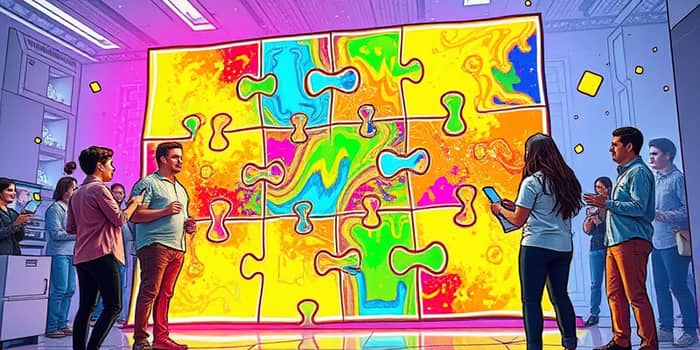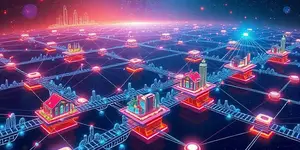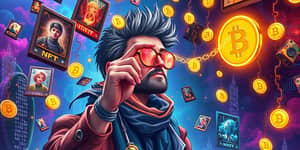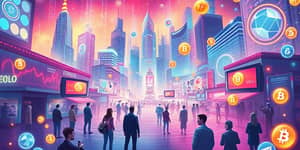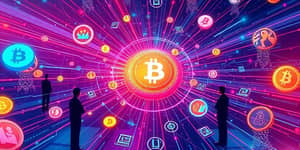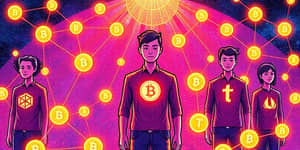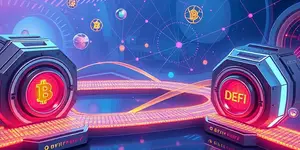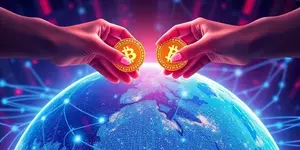In a world where digital art and collectibles often feel reserved for a privileged few, a groundbreaking innovation is reshaping the landscape. Fractional NFTs are empowering everyday investors to claim their stake in high-value digital assets. By slicing unique tokens into smaller pieces, this approach is democratizing digital ownership beyond elites and opening doors to new possibilities.
With blockchain technology maturing and interest in non-fungible tokens (NFTs) soaring, Fractional NFTs (or F-NFTs) represent a pivotal moment. They foster collaboration, community, and a sense of shared stewardship that transcends traditional investment models.
What Are Fractional NFTs?
Fractional NFTs are created when a single, indivisible NFT is locked in a smart contract and divided into multiple fungible tokens—typically ERC-20 tokens on Ethereum. Each token signifies partial ownership of the original asset.
For example, a piece of digital art valued at $100,000 might be split into 10,000 individual tokens, each representing 0.01% of the artwork. Investors can purchase these tokens at much lower price points, gaining fractional stakes in pieces that would otherwise be out of reach.
This process relies on smart contract automation for seamless execution. The original NFT owner decides the number of fractions, sets their price, and defines any governance rules. Once configured, the contract issues fractions that are freely tradable on compatible marketplaces.
The Mechanics Behind Fractional Ownership
At its core, the fractionalization process is straightforward yet powerful. The owner deposits the NFT into a dedicated smart contract vault. That contract then mints fungible tokens, each tied back to the locked asset.
These tokens can be transferred, sold, or used as collateral. If any token holder later wants to redeem the entire NFT, they must collectively accumulate 100% of the tokens, triggering a redemption mechanism that unlocks the original asset.
Because each fraction is a standard ERC-20 token, it benefits from established infrastructure—wallets, exchanges, lending platforms—and gains increased market liquidity and accessibility compared to single NFTs.
Market Growth and Future Projections
The NFT market has undergone explosive growth, and fractionalization is emerging as a major catalyst. According to industry projections:
This represents a projected growth of over 470% in five years, driven by a compound annual growth rate (CAGR) of approximately 30%. Specific niches reveal even more dramatic trajectories: sports NFTs are expected to grow at a 26% CAGR through 2031, reaching $8 billion, while gaming-related NFTs will dominate in transaction volume.
Key Benefits of Fractional NFTs
As the market matures, fractional NFTs are recognized for three transformative advantages:
- Accessibility: By offering lower investment thresholds for all enthusiasts, fractionalization allows individuals from diverse backgrounds to own stakes in premium digital art, collectibles, and virtual real estate.
- Enhanced Liquidity: Smaller tokens can be traded more frequently, fostering an active secondary market. This increased market liquidity and accessibility benefits both fractional owners and original NFT holders seeking to unlock cash value.
- Community and Education: Collective ownership encourages collective decision-making and community engagement. Groups of investors can discuss restoration, exhibition, or long-term strategy, while newcomers learn from seasoned collectors.
Diverse Use Cases and Real-World Applications
By 2025, platforms supporting fractional ownership are expanding into many domains. Digital art remains the leading sector, but other applications are rapidly emerging:
In the gaming industry, fractional NFTs enable players to co-own rare in-game assets, such as legendary weapons or virtual land plots. Sports enthusiasts can invest in fractions of coveted memorabilia—signed jerseys, highlight reels, or championship trophies—transforming fandom into real financial participation.
Beyond digital realms, platforms are exploring fractionalized real estate NFTs, where investors hold shares of property tokens. This innovation could revolutionize traditional real estate markets by allowing people to acquire fractions of high-end properties without the usual complexity or capital requirements.
Similarly, cultural institutions and content creators are tapping into fractional NFTs to fund projects collaboratively. Patrons can support film productions, music releases, or museum exhibitions in exchange for a share of future revenue or memorabilia.
Traditional vs. Fractional NFTs: A New Paradigm
Traditional NFTs revolutionized digital provenance by providing unbreakable ownership records. However, they often carry high price tags, limiting participation to a narrow audience.
Fractional NFTs retain the benefits of uniqueness and traceability but introduce a mechanism for shared investment. By distributing ownership, they lower barriers and foster broader investor participation and inclusion. Instead of a single buyer, a community can rally around an asset, sharing both risks and rewards.
Looking Ahead: The Future of Fractional Investments
As the concept gains traction, we anticipate several key trends:
1. Integration with DeFi: Fractional tokens will increasingly be used as collateral in decentralized finance protocols, enabling loans or leveraged positions.
2. Governance Innovations: New models for on-chain voting will let token holders decide on curation, sale, or development strategies.
3. Regulatory Evolution: Clearer guidelines from financial authorities will foster mainstream adoption, ensuring investor protection without stifling creativity.
By April 2025, numerous pioneering platforms have demonstrated the viability of fractional NFTs, showcasing how expensive digital art and collectibles can be made accessible with trustless, transparent technology.
Conclusion
Fractional NFTs stand at the intersection of technology, art, and finance. They invite us to imagine a world where the most coveted digital creations are not confined to a wealthy elite but shared among enthusiasts and supporters.
With access to high-value digital assets now within reach, a new generation of collectors can build diverse portfolios, learn collaboratively, and contribute to cultural movements. As blockchain innovation continues its rapid evolution, fractional NFTs will remain a shining example of how decentralization can empower communities, reshape markets, and unlock unprecedented opportunities for all.
References
- https://www.leewayhertz.com/fractional-nft/
- https://coinmarketcap.com/academy/article/what-are-fractional-nfts-f-nfts-and-how-do-they-work
- https://insights.masterworks.com/uncategorized/what-are-fractional-nfts-how-they-work-pros-cons/
- https://www.kucoin.com/learn/web3/what-are-factional-nfts-fnfts-and-how-do-they-work
- https://www.ledger.com/academy/glossary/fractional-nfts
- https://nftnewstoday.com/2025/02/06/nft-collectibles-market-2025-future-trends-expert-predictions-and-investment-insights
- https://www.rapidinnovation.io/post/fractional-nfts-complete-guide-shared-ownership-digital-assets
- https://ndlabs.dev/fractional-nfts

